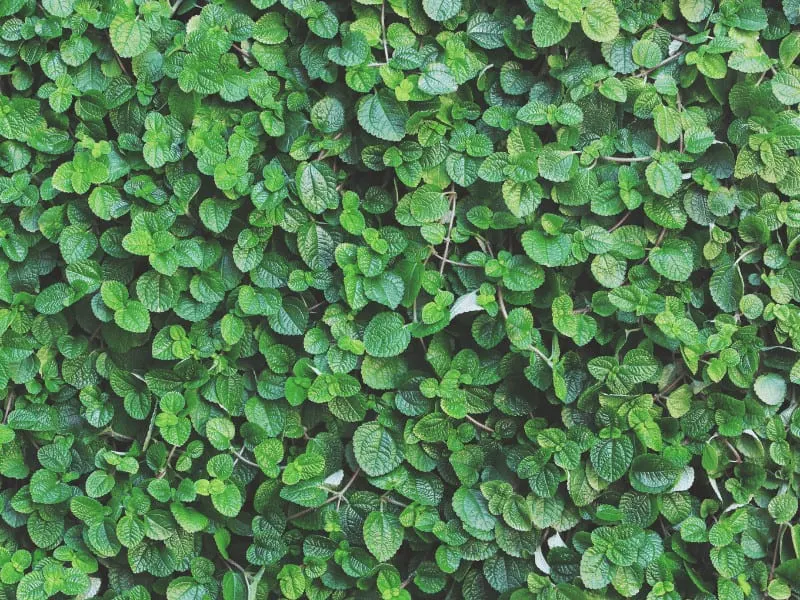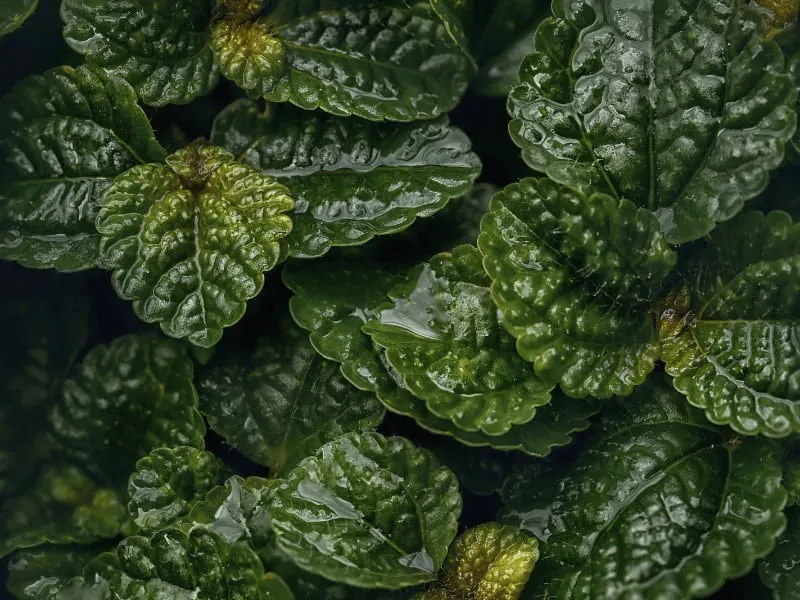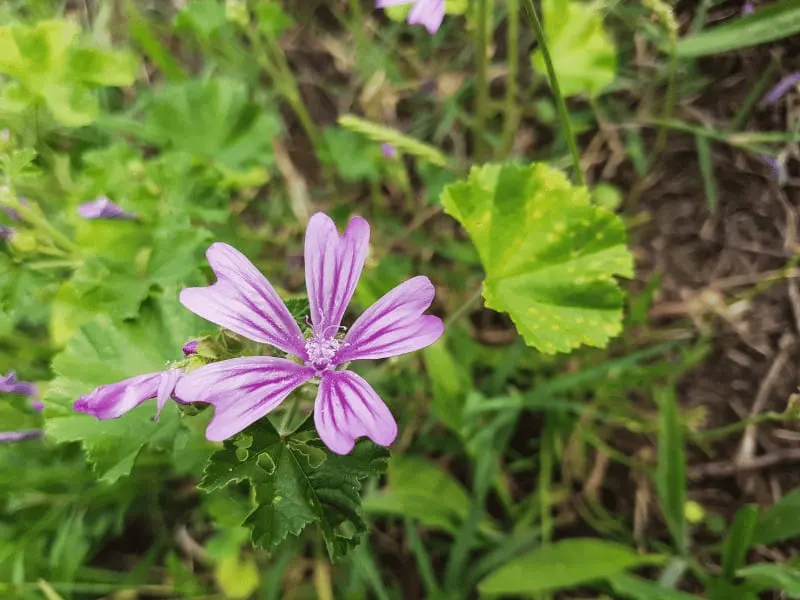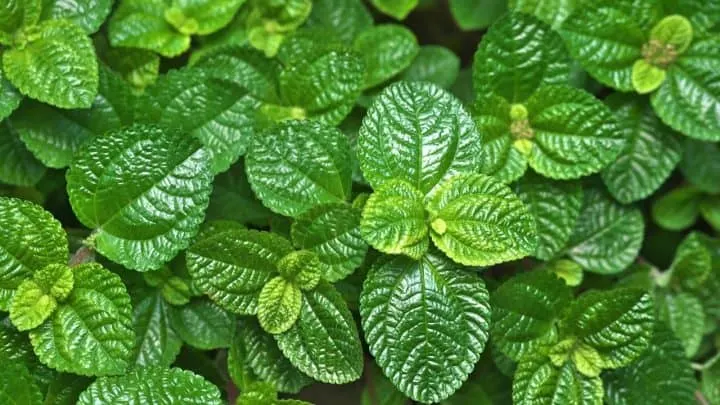The Creeping Charlie Houseplant is a lush succulent variety that grows plenty of leaves. Pilea nummulariifolia belongs to the Urticaceae family and is often grown indoors. It can also be grown outdoors as a groundcover, but most growers consider it a weed.
Creeping Charlie, otherwise called Swedish Ivy, is found in the Caribbean and South America.
The crinkled green leaves with sunken veins and different sizes add depth to this creeping perennial. It will look attractive in hanging baskets as the long, leafy vines cascade downwards.
According to NC State University, this plant is edible, and leaves are used in teas.
This creeping houseplant is easy to grow indoors, with bright green leaves and lavender flowers. The USDA hardiness zone for the Creeping Charlie (yet another name) is 10a, 11b, and 11a.

Creeping Charlie Takeaways
| Species | Pilea nummulariifolia |
| Synonyms | Creeping Charlie,Creeping Jenny,Baby Tears, Swedish Ivy |
| Family | Urticaceae |
| Genus | Pilea |
| Growth | Trailing, Spreading |
| Height | 0.1 foot |
| Width | 4 feet |
| Soil | Well-draining soil mix. Use a mix of peat moss, coarse sand, vermiculite, and perlite |
| Watering | Every 7-10 days |
| Light | Bright indirect |
| Temperature | 65-80 °F to 90 °F (18-27 °C) |
| Humidity | 40-60% |
| Fertilizer | Fertilize once a month in spring and summer |
| Propagation | Division or stem cuttings |
| Toxicity | This plant is non-toxic to cats and dogs as well as humans. |
Table of Contents
Creeping Charlie Care
Use a soil mix of peat moss, coarse sand, vermiculite, and perlite. The optimum temperature is 65 to 80 degrees Fahrenheit (18.3 to 26.6 degrees Celsius). Position it in a well-lit corner of your house where it gets bright, filtered light. You can add a water-soluble fertilizer every month in the growing period to help your plant thrive.
What soil is best for a Chreeping Charlie?
The Ground-ivy likes soil that is light and free draining. If you use any potting mix or compost, adding sand will allow the compost or potting mix to retain more moisture. The best potting mix includes:
- Peat-moss
- Vermiculite
- Perlite
- Coarse sand
Ensure that the PH of the soil remains between the range of 6.5 to 7.5 (acidic – neutral). The choice of potting mix that you use will not matter much for this plant as long as it is well-draining.

How to water a Swedish Ivy?
The Creeping Charlie houseplant requires moderate watering about once every 7-10 days. It is important to keep your soil slightly moist. Avoid soggy, compacted soil as it can lead to root rot.
When at least one fourth or half an inch of the soil has dried up from the top layer, you can only water the plant again. Overwatering your Creeping Charlie Houseplant can cause its roots to rot and turn the leaves of the plant yellow. Not having proper drainage holes can also cause these two issues.
How much Light for a Creeping Charlie?
The Creeping Charlie houseplant likes to be kept under indirect sunlight. You can close the plant to a well-lit window with blinds or curtains. Never let your plant sit under direct sunlight as the light intensity can cause the leaves to burn.
Temperature Need
The Creeping Charlie houseplant prefers to be kept under warm room temperatures ranging from 65 to 80 degrees Fahrenheit (18 to 27 degrees Celsius).
Always place your plant in an area without heat vents or drafty windows. This plant is not frost-hardy and can die in high temperatures as well.

What Humidity should I provide for my Creeping Charlie?
Keep the humidity levels around 40-60% and leave the plant near an open window to increase the humidity levels
The Creeping Charlie houseplant loves to be misted as it cannot survive in dry climates.
If your house has a dry environment, it is best to mist it daily.
How to fertilize a Creeping Charlie?
The Creeping Charlie houseplant should be fed a 3-1-2 water-soluble fertilizer during the growing period in spring and summer once a month. Fertilize from March till October. Make sure to water the plant well during the growing period so that the plant thrives.
Avoid fertilizing in winter as the Creeping Charlie goes into dormancy.
Make sure to sprinkle the fertilizer around the soil before your water the plant. You can also use slow-release fertilizers, but they would need to be diluted according to the instructions provided on the package.
Repotting
The Creeping Charlie houseplant does not like to be root-bound, which is why it is best to repot your Creeping Charlie Houseplant after two to three years. You will know your plant has become root-bound if:
- The roots start to grow out of the drainage holes.
- The roots start circling inside of the pot.
You can observe the roots of the plant by gently lifting the plant out of the pot. If you notice that the soil comes out with the plant, then it means that your plant has become root-bound; this will require you to repot your plant into a larger pot. To repot your Creeping Charlie Houseplant, you will have to:
- Get a pot that is 2 inches larger than the previous pot
- Make sure to add drainage holes in the pot
- Make a new potting mix for your plant; it can contain perlite, vermiculite, coarse sand, and peat-moss
- Take some of the soil and add it to the pot
- Place your plant into the pot, add the rest of the potting mix, and gently pat it down around it.
- Water your plant so that it settles into the new pot

Pruning Often is Important
Pruning your Creeping Charlie is simple. When you notice that some parts of the plants are dying, you can cut them off as this plant will regrow new parts easily. To further prune your plant, you will need to
- Pinch back the tips of your Creeping Charlie Houseplant vines. This ensures that your plant will grow to be bushier
- Pinch back the tips every six months
- Hold a vine between the thumb and finger
- Use your thumbnail to pinch the vein while applying pressure downwards
- You can also use scissors instead of your thumbnail
- Never prune off more than one-half of your plant
When you use a piece of equipment like scissors, make sure to sanitize them well so that you avoid any future infections.
How to Propagate a Creeping Charlie
The Creeping Charlie can easily be propagated by dividing the root-ball or stem cuttings.
Stem Cuttings
To propagate your plant through stem cutting, follow these steps:
- Prepare a propagation tray or a plant pot
- Use a proper soil mix containing perlite, vermiculite, peat moss, and coarse sand
- The propagation tray and the rest of your equipment must be sanitized. This is to avoid any future infections that can occur in your plant due to the use of unsanitized tools
- Cut off a healthy stem. Make sure that it has a few leaves on it
- Remove the leaves present on the cut end of the stem
- Create a small hole in the pot or propagation tray
- Add the soil to the potting medium
- Insert the stem cutting into the soil. Pat the soil around the stem cutting
- Cover the pot with a plastic bag or cover the propagation tray with its cover
- Remove the bag or covering after every few hours to decrease the humidity level
Root-Ball Division
To propagate your plant through root-ball cutting, follow these steps:
- Choose a pot that is slightly wider and twice as deep as the root-ball cutting
- Fill the bottom of the pot with small stones and one-quarter gravel to help with drainage
- Mix your potting soil with some compost. Make sure you make enough of it to fill the pot
- Add the potting mix into your pot and leave some room for your root-ball cutting
- Plant your Creeping Charlie Houseplant in the same depth as it was growing before
Creeping Charlie Blooms
The blooms of The Creeping Charlie plant are really tiny and have an elegant tubular look to them. The flowers have a unique color as they can appear to be lavender or even slightly white and green.
The Creeping Charlie does not bloom often, and their scent is described as having an “intoxicating” fragrance that is unique to this plant. Trim the flowers when they start fading because they slow down the leaf growth.
Creeping Charlie Growth Rate
The Creeping Charlie Houseplant is a fast grower; it can grow to a height of 12 to 18 inches (30-40 cm). The plant only survives for up to four years, even if provided with excellent care.
Creeping Charlie has bright green, crinkled, oval leaves that have small scalloped edges. The veins on the leaves appear to be sunken, which gives the leaves a more puffy and crinkly look.
When sunlight hits the leaves, they look extremely glossy and smooth. Under direct sunlight, the veins on the plant appear pink in color, but under shaded areas, the plant leaves appear to be darker in color.
Creeping Charlie is often mistaken for a mint plant because of another plant with the same name. The most well-known Creeping Charlie varieties include Malva Sylvestris, Glechoma Hederacea, Pilea Nummulariifolia, and Plectranthus Verticillatus.
Glechoma Hederacea plant produces bright green, kidney-shaped, round leaves with scalloped edges. The leaves are produced opposite to one another (four-sided leaves) and have creeping stems that root at the nodes.
You can also get a variegated version for this plant that has white or cream-colored leaf margins and a green center.
Common Problems with the Charlie Plant
Bacterial Leaf Spot
When your plant has small (up to 0.25-inch diameter), water-soaked leaf spots on its leaves, this means that it has been infected by a bacteria. Bacterial leaf spot can easily be taken care of if you find it spreading during its initial stages.
The lesions on the leaf can quickly turn black if the disease is severe or there are several lesions present on the plant. The older the lesions are on your leaf, the more paper-like texture it will develop. The bacterial leaf spot can rarely be present on new leaves.
The bacteria responsible for these lesions is known as Xanthomonas Campestris, which is dependant on wet and cool conditions. Your plant can suffer from these bacterial leaf spots if you overwater your plant.
To prevent the spread of bacterial leaf spots, you can use pathogen-free seeds for your new plant. Avoid using drip and sprinkler irrigation methods. You should avoid putting an infected plant next to another none infected plant as it can spread.
To treat bacterial leaf spots, you should use a copper fungicide, but its use is limited when it comes to managing the bacterial spread over a long period of time. You should also cut off any infected part of the plant so that the bacteria can not spread further.
Mealybugs
Mealybugs are soft, oval insects that are gray or white. These small pests are also known as crawlers and are super active when they initially develop on your plant, but their movement slows down as they continue to feed on your plant.
The slowed movement will allow you to spot these pests before they can cause any further damage to the rest of your plant.
Once a mealybug feeds on your plant through its stylets, it can draw the sap out of the tissue, and when it is done feeding, it will leave behind sticky honeydew, which attracts insects and fungus.
To prevent the spread of these pests, you will have to lightly dab the leaves with rubbing alcohol. You can apply the rubbing alcohol onto a cotton ball or a Q-tip. You can also use organic methods such as neem oil, which will disrupt the growth of these pests.
Spraying the plant with high-pressure water can also get rid of some of the mealybugs that are left behind once other methods have been used.
Whiteflies
Whiteflies have soft bodies with wings. These pests are also closely related to aphids and mealybugs. Although the whiteflies have wings, they do not use them much, but they are still capable of flying.
Whiteflies can be extremely small, making it difficult to spot them on leaves. They remain in clusters and can mostly be spotted on the undersides of the leaves. This pest is active during the day. if you disturb the leaf that they are present on, then they will start to scatter.
Whiteflies are incapable of surviving outdoors during the winter; thus, they are mostly present on indoor plants or greenhouse plants. However, they can still infect outdoor plants if they are provided with the proper environmental conditions.
Similar to how mealybugs and aphids feed, these pests too suck up the juices from their host plant and leave behind sticky honeydew, which attracts insects and causes fungal diseases.
Since they are present in clusters on one plant, they can cause the plant to become extremely weak, causing the leaves to die and fall off of the plant.
Always check the bottom side of the leaf to ensure that your plant is not infected by these pests. The honeydew left behind by whiteflies shows that your plant was fed on for several days.
To prevent the spread of whiteflies, use high-pressure water to spray them off of the leaves. Then use insecticidal soap to get rid of the rest of them.
Tips for growing the Creeping Charlie houseplant
Every plant can thrive in any household, as long as some tips and tricks are followed to help it grow properly. To achieve perfect growth for your Creeping Charlie Houseplant, you should follow these tips:
- Never keep your Creeping Charlie plant under direct sunlight, as it can burn the leaves
- Mist your plant at least five days a week
- Stop fertilizing your plant during the winter season to avoid over-fertilizing it, as its growing period stops then
- Keep the humidity levels between 40 to 60 percent
- Use a potting mix that is well-draining. Using peat moss with a combination of coarse sand, vermiculite, and perlite will help it thrive
Pilea varieties
Some other Pilea varieties are:
- Pilea peperomioides (Chinese Money Plant or Pancake Plant)
- Pilea glauca (Silver Sparkle Pilea or Grey Artillery Plant)
- Pilea cadierei (Aluminum Plant or Watermelon Pilea)
- Pilea microphylla (Artillery Plant or Rockweed)
- Pilea involucrata (Friendship Plant or Moon Valley Pilea)
- Pilea mollis (Moonlight Pilea or Pilea Leuconeura ‘Moonlight’)
Creeping Charlie vs. Wild Violet
The Creeping Charlie and the Wild Violet are crawling plants and building green carpets. Both have green leaves and purple flowers. The biggest differences are the leaf form and the leaf edges. Creeping Charlie has kidney-shaped leaves. The Wild Violet also produces more sawtooth-like serrated leaves that are heart-shaped.


Frequently Asked Questions
How long will my Creeping Charlie houseplant live?
The Creeping Charlie Houseplant does not have a long lifespan. Even with excellent care, the plant may only live up to three or four years.
How often should I mist my Creeping Charlie houseplant?
The Creeping Charlie Houseplant loves humidity; thus, misting your plant at least twice a week is best. However, if your home environment is dry, misting it daily is essential.
Is the Creeping Charlie houseplant toxic?
The Creeping Charlie Houseplant is not a toxic plant. If your pet consumes the plant, then they will not die or face any health issues.
Why is my Creeping Charlie houseplant dying?
Your Creeping Charlie Houseplant may be dying due to lack of irrigation and humidity. Increase the watering sessions to bring back their lively colors. The plant can easily recover from this issue as it will continue to grow from veins that are alive.
Why are the leaves of my Creeping Charlie houseplant falling?
Your plant is losing its leaves due to it being kept in a drafty area. Make sure that your plant is not kept too close to an open window. This plant is frost sensitive; thus, it will die if its surroundings are too cold.
Why is my Creeping Charlie houseplant turning black?
Your Creeping Charlie Houseplant is turning black because it is being provided with too much direct sunlight. Under direct sunlight, the leaves of your plant can burn; thus, turning them black.
Conclusion
The Creeping Charlie houseplant is one of the easiest plants to grow if you are a beginner at growing plants. This plant can regrow even when the majority of its sections are dead; thus, making it one of the best choices for first-time plant growers.
Creeping Charlie has a simple yet elegant look, making it suitable for offices and homes. This plant can also be planted outdoors but is considered to be a weed in outdoor gardens.
Overall the plant does not have an overpowering scent, allowing it to blend in with your other house plants.

Daniel has been a plant enthusiast for over 20 years. He owns hundreds of houseplants and prepares for the chili growing seasons yearly with great anticipation. His favorite plants are plant species in the Araceae family, such as Monstera, Philodendron, and Anthurium. He also loves gardening and is growing hot peppers, tomatoes, and many more vegetables.


